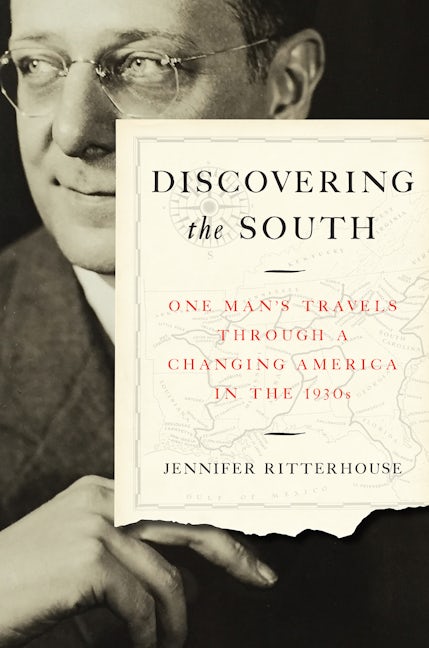Discovering the South
One Man's Travels through a Changing America in the 1930s
By Jennifer Ritterhouse

384 pp., 6.125 x 9.25, 27 halftones, notes, bibl., index
-
Hardcover ISBN: 978-1-4696-3094-6
Published: March 2017 -
E-book EPUB ISBN: 978-1-4696-3095-3
Published: March 2017 -
E-book PDF ISBN: 979-8-8908-5086-7
Published: March 2017 -
Paperback ISBN: 978-1-4696-5921-3
Published: March 2017
Buy this Book
Request exam/desk copyAuthor Q&A
Copyright (c) 2017 by the University of North Carolina Press. All rights reserved.Author Jennifer Ritterhouse talks with publicist Catherine Cheney about her new book, Discovering the South: One Man’s Travels through a Changing America in the 1930s.
Catherine Cheney: Who was Jonathan Daniels?
Jennifer Ritterhouse: Jonathan Worth Daniels (1902-1981) is most often remembered as an aide and press secretary for President Franklin Roosevelt and as the editor of the Raleigh, North Carolina, News and Observer. For much of his life, he was known as the son of his more famous father, Josephus Daniels, who owned and edited the News and Observer and who served as Secretary of the Navy under Woodrow Wilson. Josephus was also a key figure in North Carolina’s 1898 White Supremacy Campaign, while Jonathan had much more moderate racial views and grew to support black equality and civil rights over time. Jonathan’s efforts to distinguish himself from Josephus are an intriguing part of his biography and one of the reasons why, in 1937, he decided to take the driving tour around the South that I follow in the book.
CC: Where did Daniels go on his Travels through a Changing America in the 1930s?
JR: He visited ten of the eleven former Confederate states in just over six weeks and met a wide range of people, from governors to gas station attendants, industrialists to intellectuals, and socialists to reactionaries like Agrarian Donald Davidson and Gone with the Wind author Margaret Mitchell. The heart of his own book about his trip was his conversations with the people he met, and a lot of the appeal for me in following him on his journey was to see and hear from them, too, in all of their variety. I also fell in love with the map from Daniels’s book and hoped that the line of his travels across it could serve in some ways to pull together an understanding of the South that captured the region’s complexity at a time when the New Deal and the social movements it fostered were making significant change possible for the first time in decades.
CC: What surprised or disturbed Daniels during his travels?
JR: I think he was genuinely surprised or at least disturbed by the accounts of racial violence he heard along the way, especially in the Deep South. In Greenville, Mississippi, he spent an evening with writers Roark Bradford and David Cohn at the home of William Alexander Percy—who went to bed early rather than sitting up talking. Cohn and Bradford described the high emotions among white Mississippians leading up to a recent lynching in a way that shook Daniels, who had written an editorial about the horrific nature of the lynching but seemed to get a stronger sense of its reality from their discussion. In Tuskegee, Alabama, Daniels met a black educator who worked for the U.S. Department of Agriculture touring farms around the state. He described some of his own encounters with white men threatening to shoot him just for being in their counties or talking to their sharecroppers. For Daniels, this was a rare experience of hearing truth from a black informant—one that highlights his own position of privilege but also an example of how listening got him asking questions. For me, this and other parts of Daniels’s journey where he heard black voices and women’s voices were particularly important to emphasize in hopes of having “one man’s journey” but still, to the extent possible in this project, a multi-vocal South.
CC: What do you mean when you say Daniels’s journey was “the same journey, writ small, that the United States was on”?
JR: Discovering the South is a narrative with an argument, and its argument develops from an analogy or even a synecdoche—the literary device where a part represents a whole. I put Daniels’s 1937 car trip into the context of his lifelong moral and political journey, which was itself part of the United States’ longer and still-unfinished journey from a whites-only to a truly pluralist democracy. The road beyond the nation’s slight left turn in the 1930s would be long, narrow, and frequently obstructed. But the black-led civil rights movement that eventually wrested change from a reluctant nation and a defiant white South could not have taken off and gained as much ground as it did if the United States had not already entered the long civil rights era—if it had not emerged into new political and human rights territory through Depression-era journeys like that of Jonathan Daniels.
# # #
